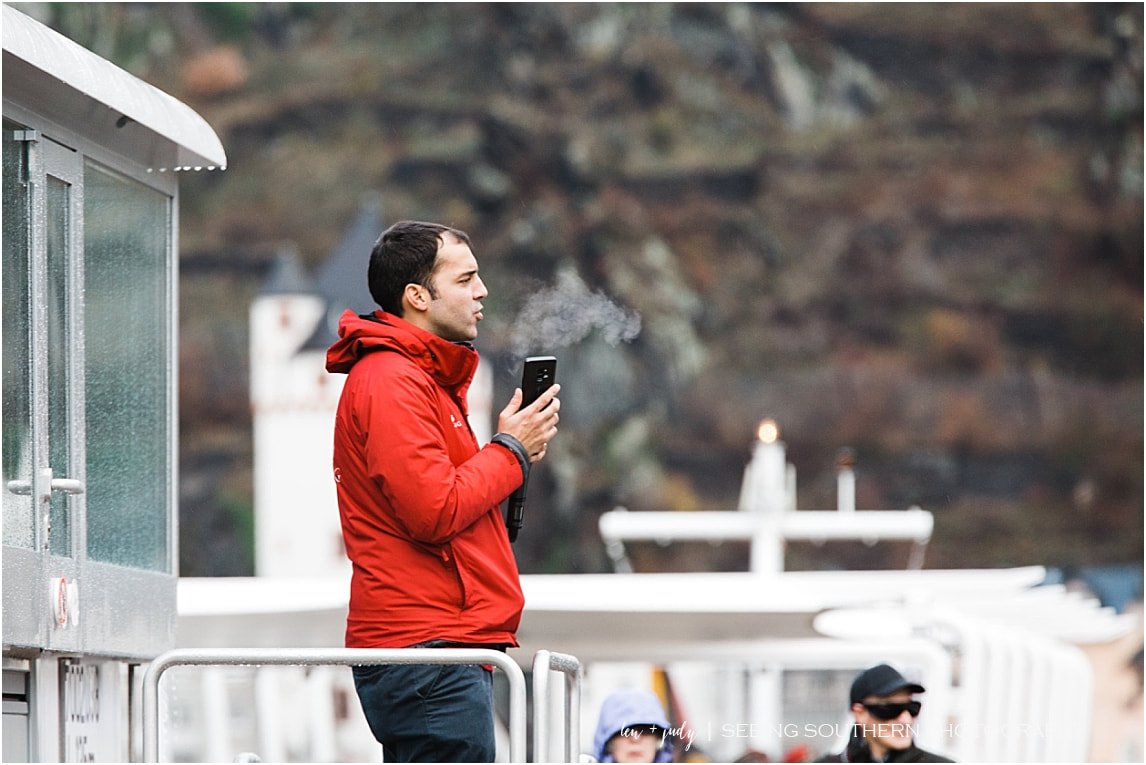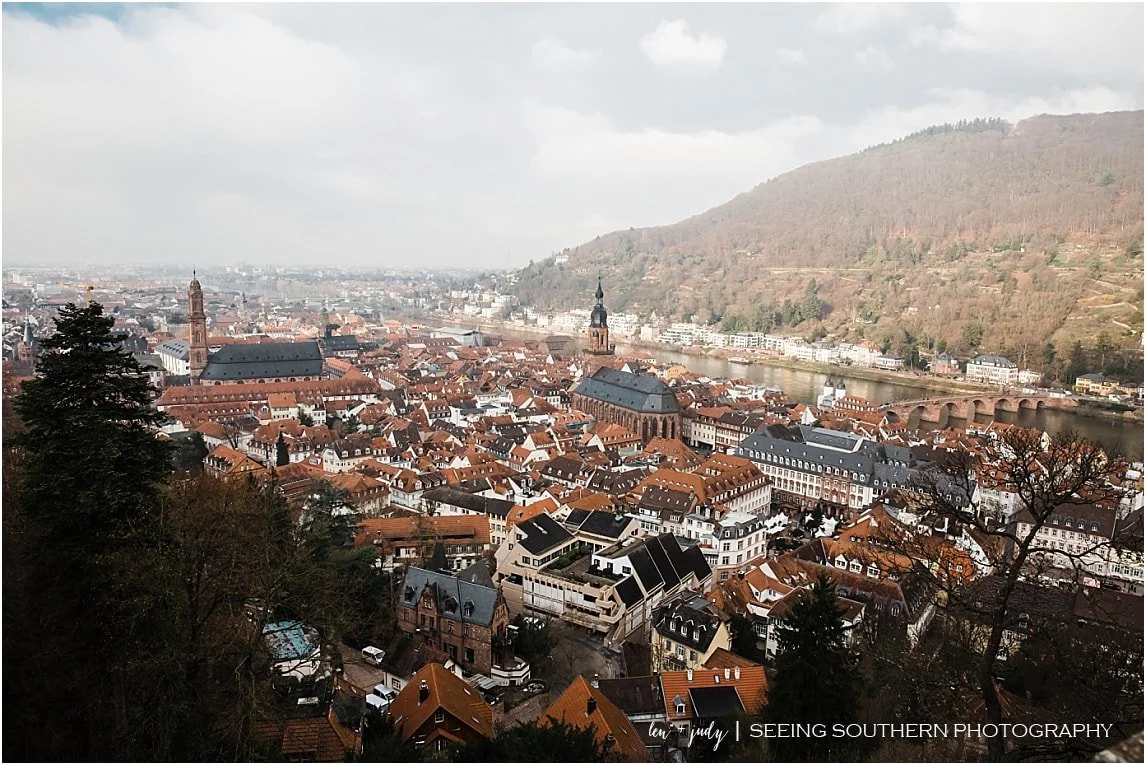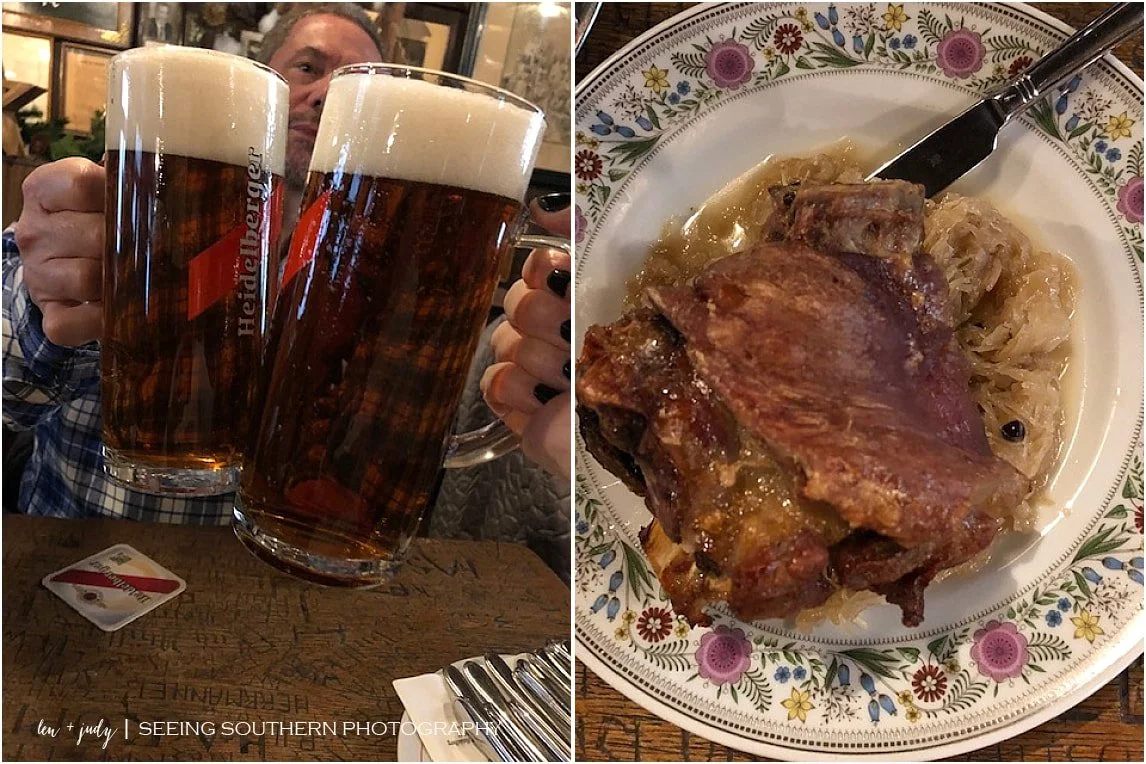Travel Like A Viking on the Long Ship Alruna
Original Post | December 2018
There's nothing as spectacular as spending a holiday in Europe during the winter. Many people choose the warmer months to travel abroad,
but we've discovered that some of the most incredible landscapes, breathtaking adventures and historical treasures
are more extraordinary when shrouded in winter's charm.
As Viking's guest aboard the Long Ship Alruna, we are taken aback by its simplicity yet elegant atmosphere. Come be amazed.
#vikingrivercruise #hostedtrip
After walking through Amsterdam, navigating lanes bursting with pedestrians, trams, cars and over 1.3 million bikes, boarding our longship via a red carpet landing appeared to be quite a juxtaposition from the three days we had just experienced. Little did we know at that moment that this red carpet would come to symbolize our entire journey on our castle-dotted Rhine Getaway aboard the Viking's Longship Alruna.
This intimate setting would allow us to make friends, share adventures, swap stories and let the beauty of the Rhine River encapsulate everything we did. By the time we checked in on Saturday evening, our bags were in our room and there was little to do other than meet our fellow passengers in the lounge for the crew's welcome and a champagne toast to the week ahead.
Our staff: Bartosz Balwierz, captain; Evelyn Kolditz, hotel manager; Sebastian Matern, program director; Dragan Plavsic, housekeeper; Alfred Caluag, Maitre d'; and Saldua Mark Anthony, executive chef.
After our first three-course meal with Chef Mark in the restaurant, we prepared to cast off shortly before midnight. In a couple of hours, the ship would pass through its first lock of the journey.
The Rhine River is 765 miles long and flows northwest from the Alps in Switzerland to the North Sea, through France, Germany and the Netherlands. Major cities along our route will be Amsterdam, Basel, Strasbourg, Koblenz, and Cologne.
If you were ever in doubt of the captain's skills, watching him navigate through the slim locks with only inches between the ship and the concrete wall, you became a believer at this very moment. You almost held your breath until the ship cleared the lock and resumed the cruise down the river. From Amsterdam to Basel, we traveled through 10 locks, and each time, people would stop what they were doing and watch. It became one of those defining moments of river cruising.
Windmills of Kinderdijk
Our Sunday morning excursion would be our first port of call, Kinderdijk, The Netherlands, famous for its windmills. As a UNESCO World Heritage site, the windmills are used to pump water from polders using internal or external scoops into reservoirs on two levels. At one time, there were more than 150 windmills in the Alblasserwaard and Vijfheerrenlanden areas; today, only 28 remain, 19 of which are in the Kinderdijk area.
The eight mills that survive on De Nederwaard were all built in 1738. Bonnet mills (only the top section revolves with the wind) built from brick and large sails come from within one foot of the ground. Their nickname, ground sailors.
Cologne, Germany
Our next port of call is Cologne, Germany, where we would be in awe of its architectural icon and its proud German beer.
With an expert guide, we were introduced to the Cologne Cathedral. Its construction began in 1238, and it was not completed until 1880. Over the next seven centuries, builders were inspired and crafted plans according to their faith and inspiration. As a UNESCO World Heritage Site, it stands as one of the most beautiful monuments to European Christianity.
The basilica is a five-aisled structure. The nave is 43 meters high. The original liturgical appointments of the choir are still extant including the high altar with a slab of black limestone believed to be the largest in any Christian church. Also visible, the carved oak choir stalls, the painted choir screens, fourteen statues on the pillars of the choir and a cycle of stained-glass windows.
Most notable within the church: Gero Crucifix (10th century), Shrine of the Magi (1180-1225), altarpiece of St. Clare (1350-1400), altarpiece of the City Patrons (1445), the altarpiece of St. Agilolphus (1520)
We were educated on German beer in Cologne.
During our optional excursion, Cologne's Beer Culture and Dinner (a must), our guide roamed from beer hall to beer hall allowing us to sample the Brahaus culture.
Here's the scoop: German beer connoisseurs are loyal to a style rather than a brand. The most famous, Kolsch beer, is served very cold. They carry the tall glasses of Kolsch to your table on a crown (see below), a circular tray. The glasses are small (7 oz) but served this way to keep two very important items intact. The temperature (Kolsch beer MUST be cold!) and the head. The head is a very import part of the Kolsch experience and should last to the bottom of your glass. And don't worry, when yours is empty, the servers will quickly replace the empty one. No more? Simply put your coaster on top and that will send the message.
And here's an interesting fact. The German beer purity law (Reinheitsgebot) has been around since 1516 when Duke Wilhelm IV of Bavaia decreed that beer will only have four ingredients: hops, barley, water and yeast (added a bit later). Most houses still hold fast and remain loyal to the Reinheitsgebot, but with the birth of craft breweries, some are pushing the boundaries.
Whether you taste the Kolsch (clear with prominent hops) or Bock (heavy and malty brew) or Pils (blond and clear), sipping your choice in a brewhouse in Germany trumps sipping in a bar in America every time.
Braubach and Rüdesheim: The Middle Rhine
We sail through the night and the morning brings us to Braubach. The first to welcome us, the 700-year-old hilltop fortress of Marksburg Castle. Its purpose becomes its beauty with little modernization; it's construction, original.
It's a steep walk to the entrance, taking about 30 minutes.
Since the 12th century, noblemen and lords and houses have called this complicated maze of rock stairways, internal passageways, and historical artifacts home. It was originally built to protect the town of Braubach. Following Napolean's defeat of the Roman Empire in 1806, it became a prison and home for disabled soldiers. In 1866, Prussia took control of the castle; in 1900, the German Castle Association purchased the massive structure for 1,000 gold marks. With that, restoration began.
Today, it's an extensive museum telling history's story of multiple centuries. Family crests line walls remembering the inhabitants. Many walkways are treacherous and take time to navigate; there are no elevators and it is not accessible by wheelchair. Guided tours (7 euros adults) are available and are encouraged to understand the castle's history.
Following the excursion to the castle, we return to the ship and continue down the Rhine River. As with most days onboard, there are demonstrations and gatherings, an opportunity for cultural enrichment.
On this day, we are introduced to Rüdesheim Coffee and exactly how to construct. Who knew combining coffee, brandy, sugar, dark chocolate and whipped cream would be the cure to what ails you on a cold December day?
Considered to be the most beautiful stretch of the Rhine River, sailing from Braubach to Rüdesheim proved foggy and wet.
The Rhine - "Old Father Rhine" as Germans call their river - flows through multiple countries from the North Sea. The Upper Rhine sits along Germany's borders with Switzerland and the French Alsace. The Middle Rhine showcases castles, forests and vineyards and The Netherlands, and because of its beautiful landscape and numerous castles and fortress, it is a UNESCO World Heritage Site. Toward the end, near Koblenz, where the Rhine narrows, there lives a legend of the Lorelei Rock. A beautiful maiden would sit on the rock and sing songs to woo the sailors that passed. And when he gave in, he met his doom on the jagged rocks. A statue sits at the river's edge to remind travelers of that maiden.
However, as we rolled along the river, Program Director Sebastian braved the elements providing the soundtrack for scenery. Although our view land that lined the water was a little less than we had anticipated, we had grown accustomed to winter weather in Europe. We sat in the lounge, nestled in wool blankets, watching the stories drift by, of vineyards perched on cliffs, castles rising from the cities below. On a whim, we've move to the upper deck and walk along the track until the cold and wet got a little too cold and wet.
We have arrived in Rüdesheim, and it's time to eat and drink. Meals are available on the ship at all times, but with Viking, opportunities to be immersed within the city and its people are the true essence of this type of travel and what Viking does so well.
By this time, we've mastered "PROST!" (cheers) perfectly and we're ready for whatever a German brewhouse can deliver. Such wishful thinking!
By bus, a crowd of foodies headed to Rüdesheimer Schloss. Serving authentic German cuisine with beer and wine, the experience was likely the best of our trip. Live music, shot-skis (they never said exactly what was in that cup) and dancing through the night - even a ladies symphony of cowbells to Edelweiss - proved to be the true cultural experience for which we yearned.
Heidelberg
By morning light, we dock in Mannheim for a morning excursion to Heidelberg, German's oldest university town.
One of the most beautiful and preserved castles along our route is Heidelberg Schloss (castle). Its history extends back to the 1200s when records speak of the castle. Known as a royal house and a military stronghold, it has endured lightning strikes, wars and battles since the 1600s. At the point in history, much was in ruin; people started vying for the castle's rebirth, especially artists and historians who understood the structure's place in history.
Today, it's maroon facade showcases the roots of the city and attracts millions of tourists each year. Don't miss the world's largest wine barrel, built in 1751. It stands seven meters high and holds 58,124 gallons of wine.
As beautiful as the castle and the grounds are, it's view of the Rhine River and the city below speak to its romantic ideal.
We have an opportunity to walk through the city of Heidelberg. Chocolate greets us first.
We meet the proprietor of Vorbach Chocolate and quickly purchase a tin of 12 defendant chocolate truffles. Plus, we add some hot chocolate to the mix. Understanding that this will definitely not last very long, it comforted us to know he ships worldwide.
For lunch, we dive into a Mark Twain haunt, the Red Ox Inn, located strategically close to the chocolate shop. It's known as one of the city's oldest student pubs. The house was built in 1703 and has been serving Heidelberger Pils (which we totally loved) to writers and wanders for the longest. And of course, others such as John Wayne, Marilyn Monroe, Mamie Eisenhower, Olivia de Havilland, and others with rather difficult names to pronounce.
On the bold dark wooden walls hang images and signatures of these well-known patrons, including Mark Twain. Likewise, signatures and sentiments are carved into the wooden tables and chairs. We order two pints and leaving without dining in a Twain refuge is totally wrong. I go out on a limb and order the unusual (for me): oxtails and sauerkraut. Len simply sipped his pint and nodded when offered a taste of the dish.
Twain visited the city in 1878 and called it "the last possibility of the beautiful."
Freiburg
It's Thursday morning, and we're off to Freiburg and the Christmas markets.
Lines of booths with lights and ornaments host a steady stream of shoppers even this early in the morning. We search for snow globes but find none that move us. Instead, we consume sausages with hot mustard and fresh bread. For dessert, Nutella and banana crepes.
In the middle of the city, Freiburg Minster, a Romanesque church began in the 1200s. Once construction began, it was finished in its Gothic style, and it's the only Gothic church tower completed in Germany during the Middle Ages.
At the time of our visit, the scaffolding has just been removed from the spire, unfolding an extensive renovation. Surviving the bombing raids of WWII, the tower has 16 bells. Its multiple stained glass windows (letting limited light inside the cathedral) telling stories of Christianity and mankind are stunning.
The Black Forest and Colmar
We have arrived in Breisach, and by mid-morning, we're on a bus headed toward The Black Forest.
As we drive through the countryside, towering pines line the roads with a scant sprinkling of snow. My only regret was that we couldn't walk among the pines in the absolutely breath-taking landscape. Our destination, Hofgut Sternen and the Black Forest Village.
The cuckoo clock shop grabbed our attention with continuous shrieks of time announcements. One then the other which by the time 30- seconds has passed, you were actually loving the melodies. These pricey, yet authentic, works of art hung in my grandmother's house. I remember as a children hearing that bird, wishing it to stop. Now, it takes me back to a memory that hadn't been awoken in years. It was settled. This would be my memory of Viking.
This beautiful wooden artifact Made in Germany (complete with pine tree, dancing man and a fence) was coming home to Mayne Mill.
Like you can leave the Black Forest without learning how to make a Black Forest cake?
We watched. We learned. We ate.
Granted mine will never be as lovely as his, it will take me back to Germany.
Afternoon takes us into France, to Holtzwihr, near the Alsace district. It wasn't until the winter of 1945, when 250 German infantrymen invaded the area, that this would became and would remain the setting of an American story.
Native Texan First Lieutenant Audie Murphy saw the onslaught, ordered his men to retreat, and single-highhandedly held off the attackers with a .50 caliber machine gun. He fired at the Germans and the Colmar offensive drove the Germans from their last foothold on French soil.
It is the very spot in the forest where a young 21-year-old lieutenant became a country's hero. For all those with direct connections to WWII, this memorial was a highlight of the trip. Upon returning home, Murphy would come to appear in more than 40 films, including the 1955 film "To Hell and Back."
To book your adventure down the Rhine River with Viking, visit the Viking website.
The Audie Murphy Memorial outside the city of Holtzwihr
A WWII monument to the US Army on the hill overlooking Sigolsheim and Kientzhei, Alsace France


















